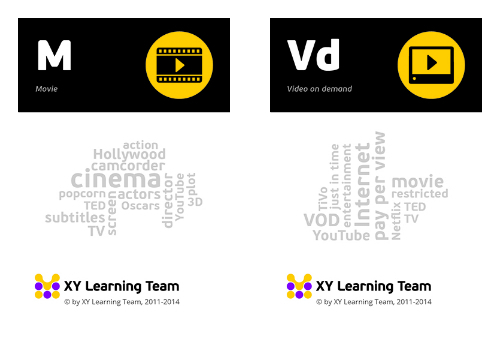2018 Oscars: Learning And Development Lessons Taught
I love movie awards season. The anticipation, the savoring of the films, and the intensity of the competition. After watching some of this year’s Best Picture contenders, I was inspired to find connections to Learning and Development.
Here are some lessons from the top Oscar nominees:
1. The Right Words Make All The Difference: "Darkest Hour"
Churchill was a master orator. He used powerful and precise words to inspire, uplift, and rally beleaguered Britain. Strong language hits the mark to communicate a point. A thorough review of content goes beyond grammar and accuracy. We also need to ask the following: Is our content relevant and memorable? Does it answer learners' questions? Does it align with learning outcomes and business goals?
2. A Common Language: "The Shape Of Water"
Verbal communication isn’t everything. You can come from different worlds and still speak the same language. This strikingly beautiful movie tells the fairy tale romance of a mute cleaning lady and a magical beast who share a silent connection. This fantasy inspires us to create symbols, visuals, and maps that all audiences can understand—regardless of their culture, abilities, and language.
3. Stay On Message: "3 Billboards Outside Ebbing, Missouri"
The messages placed on 3 billboards by grieving mother Frances McDormand are direct, bold, and provocative. She won't let anyone forget about an unsolved crime in her small town, and she certainly gets her point across. Are we getting our learners' attention? Are we staying on message when it comes to the "why" of learning? Maybe, we don’t need giant billboards, but our messages should be clear and unfettered by "nice-to-know" information.
4. Cover From Above: "Dunkirk"
How did the miraculous rescue of hundreds of thousands of Allied troops from the beaches of Dunkirk succeed during World War II? One of the key contributors was the heroic pilots of the RAF providing air cover, while hundreds of small boats picked up the stranded troops. Make sure that support for learning is always in place. For all deliverables, provide a cover for learners by teaching supervisors how to support transfer to the workplace. Also, work with stakeholders to eliminate barriers to performance, which have been identified in your up-front analysis.
5. Not Everything Is As It Seems: "Get Out"
No one expected a sweet love story to turn into a horror movie. Audiences were surprised to find this wild ride of a thriller full of social commentary. Can learning experiences explode myths, and tell stories that shock, thrill, and turn every assumption on its head? If so, our learners will certainly never fall prey to Ebbinghaus’ Forgetting Curve.
6. Keeping It Real: "Lady Bird"
Can we take a topic already familiar to most people and make it interesting? "Lady Bird" provides an original take on the coming-of-age story. It does so without over-the-top drama. Instead, the characters are people you may know and their dialogue sounds real. When we speak in the voice of the learner, it must sound authentic. The problems, words, and approaches we present should be realistic and targeted at the right level. To do this, we need to work closely with SMEs to gather, structure, and present content. Whenever possible, we should spend time observing the target audience within their work context. Use empathy maps to get into the head of the target audience.
7. The Common Denominator: Storytelling At Its Best
Every single Oscar nominated movie tells an engaging story. We remember these films for their unusual characters, surprises, conflicts, tensions, and unsolved mysteries. Learning designers always need inspiration, so why not start with your favorite movies? Why did you enjoy them? How did they capture your interest? What lessons can you apply to learning design? You can then incorporate these elements into your deliverables, including gamification and eLearning scenarios.
May the best movie win, and may your learning deliverables always be award-worthy!
Further Reading:
Learning from the Movies: "Arrival" and the Power of Questions, by Michele B. Medved.









